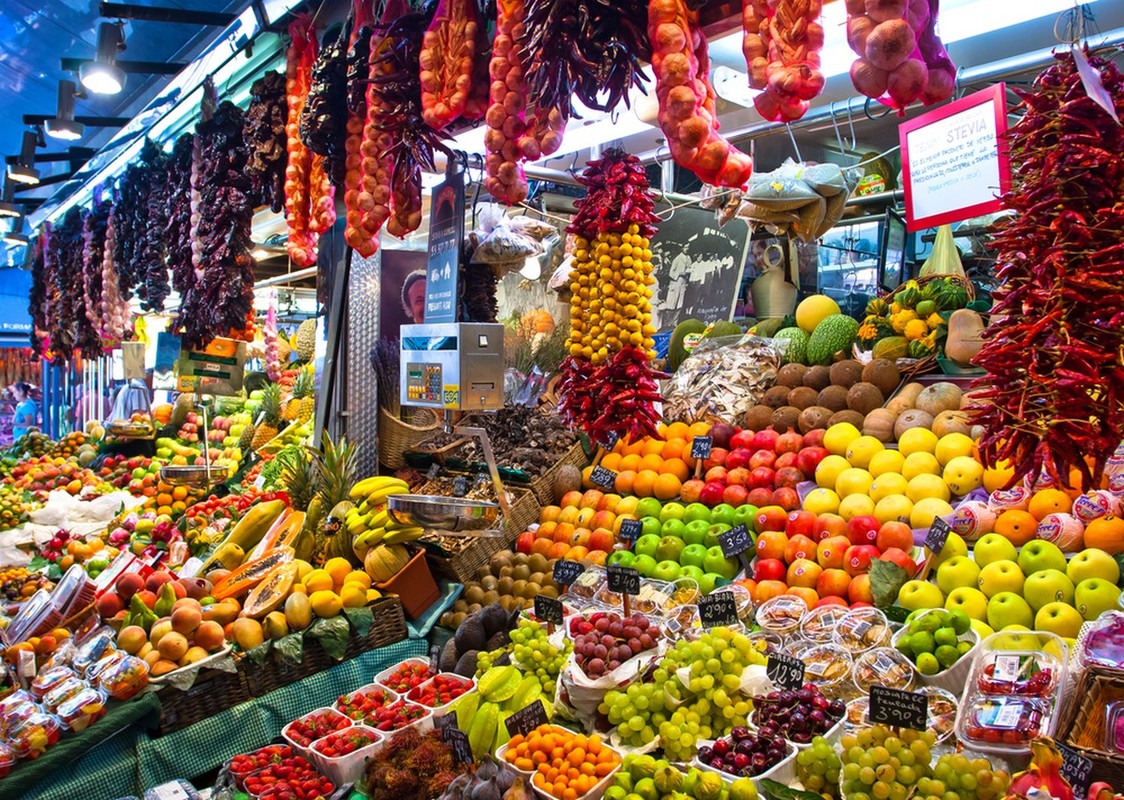7.1 Food production
 The amount and feasibility of agricultural production varies between different regions of the planet. Agriculture is impossible in the coldest regions of the Earth, such as Greenland, Antarctica and the Spitsbergen. Dry deserts and steep mountain ranges are likewise unsuitable for agriculture. The most suitable areas for agriculture provide enough warmth and precipitation for plant growth, and have a fertile soil type.
The amount and feasibility of agricultural production varies between different regions of the planet. Agriculture is impossible in the coldest regions of the Earth, such as Greenland, Antarctica and the Spitsbergen. Dry deserts and steep mountain ranges are likewise unsuitable for agriculture. The most suitable areas for agriculture provide enough warmth and precipitation for plant growth, and have a fertile soil type.
The monsoon climate region in Asia is perfectly suited for rice farming. The most productive areas produce over ten tons of rice per hectare every year.
The temperate grassland regions of the temperate zone are likewise well-suited for agriculture. The relatively flat and treeless areas are easy to convert for agricultural use, and the fertile soil type is perfect for farming crops such as corn and wheat. By using artificial irrigation methods, the yield from these kinds of areas can often surpass that of the Asian rice fields.
Agriculture in the European and North American broadleaf forest zone takes the form of mixed agriculture, where the same farms focus on both raising livestock and growing crops. The soil type is well-suited for agriculture, and the amount of rainfall is likewise sufficient. However, agricultural production in these areas also relies greatly on mechanization and fertilization. Greenhouses are also common in these regions.

The Mediterranean produces a lot of citrus fruits. Barcelona, Spain.
In the Mediterranean climate region, agricultural production is concentrated on fruits, such as oranges and lemons, grapes and olives. In addition, the long summers and rainy winters of the Mediterranean climate provide perfect conditions for growing different vegetables.
| Nation | Value of exports, billion USD |
|---|---|
| United States | 147 000 000 (e.g. corn, wheat, soy, and cotton) |
| Netherlands | 90 000 000 (cereals, fruits, vegetables, meats, flowers) |
| Germany | 84 000 000 (cereals, meats) |
| Brazil | 75 000 000 (beef, soy, corn, cocoa, tobacco) |
The significance of tropical rainforest regions for the planet's agriculture has grown significantly during the last couple of decades. Rainforests have been cleared to make room for the farming of products such as cane sugar, soy, palm oil and beef. The climatic conditions of the regions make agricultural production effective, but the larger production also causes significant environmental problems.
There are areas in inland Asia and Africa where drought, rocky soil and mountainous terrain prevent efficient agricultural production. In these areas, people rely on animals such as goats and sheep for their livelihoods.
The production of potatoes.